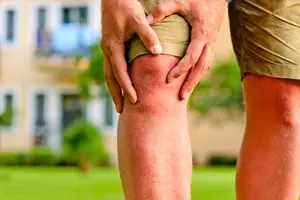Joint pain: what they betray

Joints, complex and varied structures
With around 400 joints, the human body is a mobile and flexible machine, which generally stays well “oiled” until the end of your fifties. From this age, the joints suffer the consequences of aging, in particular the degradation of cartilage and the hardening of certain tissues.
You should know that the joints, which are the points of union between the different bones of the body, are complex structures containing various tissues: connective tissue (support), cartilage, membranes, fluid (synovial fluid), ligaments …
Joint pain can occur at any age and can have a multitude of causes:
- Traumatic : a fall, an accident, a blow or even a too violent stretching can damage the joints and their various components.
- Mechanical : the wear and tear of certain tissues, such as cartilage in cases of osteoarthritis, can be a source of pain, as can a malformation, an alignment anomaly (X-shaped knees for example).
- Inflammatory : several areas of the joint can be the site of inflammation, in particular the tendons (tendonitis), the “bursa” (bursitis), or the entire joint: this is what happens in arthritis, rheumatoid arthritis and other inflammatory rheumatism.
- Crystal deposits : this is for example the cause of “gout”, a disease linked to deposits of sodium urate crystals.
- Infectious : it is quite rare, but certain viruses or bacteria can attack the joints and cause severe pain, or persistent pain (the Chikungunya virus can cause such symptoms, for example).
In short, a multitude of diseases can cause joint pain. If the pain is accompanied by fever, it is necessary to consult urgently. In all situations, if in doubt, do not hesitate to consult your doctor.









